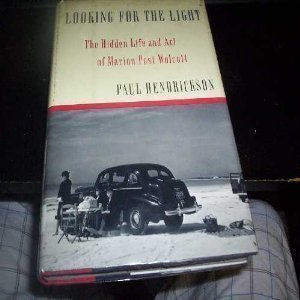
Diane Arbus: A Biography
Book Description
Through the lens of a camera, Diane Arbus captured the raw edges of humanity, revealing beauty in the bizarre and haunting in the mundane. This riveting biography by Patricia Bosworth unravels the complexities of an artist torn between the ordinary and the extraordinary, battling societal norms while forging her path to fame. With visceral detail, it chronicles a life filled with captivating contradictions—love and despair, genius and madness. As Arbus navigates friendships with the avant-garde and confronts her own demons, one question looms: What price will she pay for revealing the truth behind the human façade?
Quick Book Summary
"Diane Arbus: A Biography" by Patricia Bosworth is a piercing exploration of one of the 20th century's most provocative and influential photographers. Bosworth traces Arbus's journey from her privileged upbringing in New York City, through her break with societal conventions, to her daring photographic work that celebrates society’s outsiders and defies the expected. The biography delves into Arbus’s complex relationships—with her family, mentors, lovers, and subjects—revealing a woman persistently navigating between her emotional vulnerability and artistic courage. Bosworth examines how Arbus's relentless pursuit of truth through her lens was both her gift and her curse, offering readers an intimate portrayal of an artist who paid a steep personal price to expose the world’s hidden realities. Through vivid narrative and thoughtful analysis, this biography uncovers the intersections between Arbus's personal life and her groundbreaking art.
Summary of Key Ideas
Table of Contents
Breaking Societal Norms and Artistic Rebellion
Diane Arbus’s life began amid comfort and affluence, growing up in New York’s upper-class milieu. Rather than accept the boundaries of her privileged world, she yearned for authenticity and rawness, which marked an early rebellion against her prescribed role as wife, mother, and daughter. Her early partnership and marriage with Allan Arbus provided her an initial entry into photography, but eventually she needed to pursue her own vision, feeling confined by both her marriage and her social background.
The Intersection of Personal Struggle and Creative Vision
As Arbus embraced photography as her own expressive medium, she embarked on a journey to document society’s outsiders—circus performers, transvestites, people living on the fringes. She brought an unflinching gaze to her subjects, challenging her audience to see humanity in the marginalized and to question what is considered “normal.” Her work disrupted traditional notions of beauty and ugliness, exposing the coexistence of both in everyday life. Bosworth traces how Arbus's art was inseparable from her quest for self-understanding, as she projected her own inner conflicts onto her subjects.
Relationships and Influences Shaping the Artist
Relationships shaped the course of Arbus’s development as an artist. Her complicated marriage with Allan—supportive yet stifling—gradually dissolved as Arbus’s ambitions grew. Friendships and mentorships with figures like Lisette Model were transformative, pushing Arbus further into the avant-garde art world. Bosworth details how these connections provided both camaraderie and competition, fueling Arbus’s creativity but also her isolation and self-doubt. The biography exposes the vulnerability behind Arbus’s fearless creative choices.
Exploring Marginality and the Unseen
Arbus’s relentless focus on the marginalized reflects both her empathy and her own sense of alienation. She was drawn to people living outside mainstream society, finding companionship in their difference and courage in their self-presentation. Bosworth suggests that Arbus identified with these outsiders, recognizing her own outsider status as a woman challenging artistic and societal conventions. Her willingness to face uncomfortable truths in her work became a hallmark of her legacy, yet also intensified her sense of fragility.
The Emotional Costs of Artistic Honesty
The biography does not shy away from exploring the personal costs of Arbus’s pursuit of honesty. Her fascination with extreme emotional and physical states mirrored her own battles with depression and existential angst. Bosworth narrates Arbus’s intensifying internal struggles, culminating in her tragic suicide. The narrative underscores how the same qualities that fueled Arbus’s genius—the drive to see and reveal deeply—left her exposed to personal despair. Ultimately, Bosworth’s portrait reveals Arbus as a visionary who forever changed the landscape of photography, her work and life inseparably intertwined.
Download This Summary
Get a free PDF of this summary instantly — no email required.





